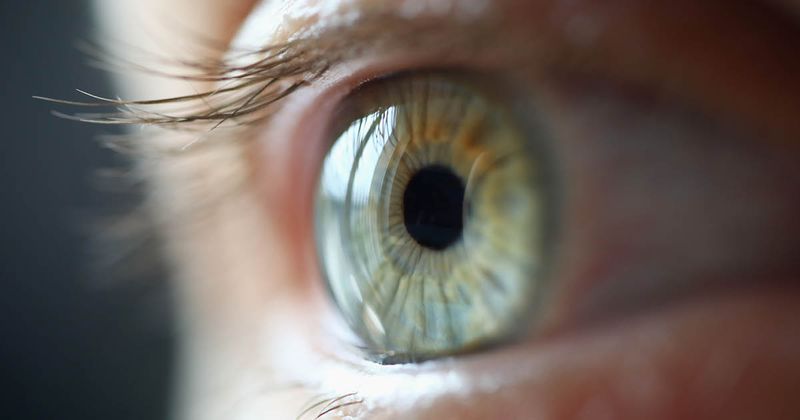Cryopreserved amniotic membrane helps manage ocular surface disease before surgery
The success of ocular surgery, especially refractive surgery, hinges on the health of the ocular surface.
By paying attention to the ocular surface before surgery, addressing any observed abnormalities and implementing therapies to treat ocular surface disease (OSD), we can improve vision outcomes and patient satisfaction and help prevent postoperative complications.

Source: Adobe Stock
A promising therapy for patients with OSD that accelerates recovery of ocular surface health and corneal nerve regeneration is cryopreserved amniotic membrane (CAM). CAM is a biologic corneal bandage designed to treat diseases of the ocular surface by creating an environment for regenerative healing. A wide variety of signs and symptoms such as corneal staining, reduced corneal sensitivity, pain and visual disturbances can be improved with CAM therapy.
Treatment algorithm and goals of therapy
Various factors are involved in making an accurate assessment and sound treatment plan for the preoperative patient with dry eye disease. These include the patient’s predisposing medical history including autoimmune disease, uncontrolled diabetes, radiation, Bell’s palsy or blepharoplasty; the use of specific medications such as retinoids or medicated eye drops; the use of previous dry eye therapies and the response to those therapies; the nature of the patient’s symptoms; the severity of the physical and objective signs; and the patient’s vision goals. Dry eye, whether mild or severe, should be treated, especially before refractive surgery, to achieve preoperative measurement stability for accurate surgical planning and patient satisfaction postoperatively.
The treatment of OSD in the preoperative patient population often involves an aggressive and multifaceted approach requiring a combination of prescription medications and procedures to stabilize the ocular surface. Although lubricant eye drops are an essential treatment for dry eye, they are often insufficient. But by using all the information we have available from the patient’s history and physical evidence, we can implement the appropriate therapies from the get-go. For example, if a patient demonstrates topographically significant epithelial basement membrane dystrophy, a superficial keratectomy should be performed to normalize the cornea. If signs of blepharitis or meibomian gland inversion are observed, warm compresses and lid hygiene should be instituted immediately. The course of treatment will depend on the patient’s response to the prescribed therapies.
Benefits of CAM
CAM, specifically Prokera (BioTissue), can be used to address various ocular surface conditions that patients may present with before surgery, ranging from dry eye to neurotrophic corneas and persistent epithelial defects. One of the reasons I like CAM is that it works fast; I can put Prokera in a patient and expect to see improvement in the ocular surface 3 to 5 days later, increasing my confidence in the accuracy of my biometry. Other benefits of Prokera include its ability to reduce inflammation and scarring, which is why I like to place Prokera immediately after a superficial keratectomy for epithelial basement membrane dystrophy or Salzmann’s nodular degeneration.
Incorporating CAM into practice
Before placing Prokera, I always have a conversation with patients about the technology, its benefits and what to expect. I inform them that they will have a foreign body sensation, which should be tolerable and not painful. An analogy I like to use for patients, which I borrowed from Dr. Neel Desai: If you broke your arm, you would have to wear a cast. It is not comfortable to wear a cast, but it has an essential purpose, which is to help you heal.
To further alleviate patient concerns, I explain that Prokera will stay in place for only a few days, and in the worst-case scenario, I am available any time to remove it sooner than intended, if needed. These reassurances were a game changer for my patients. There was a time when almost every third or fourth patient would call or come to the office feeling urgent apprehension after I placed Prokera. That was before I realized that I was not adequately preparing and reassuring my patients. After some adjustments and fine-tuning, the 2- to 3-minute conversation I have with my patients before placing Prokera has reduced my patient calls and urgent visits to zero.
To improve patient comfort and anxiety and to prevent the Prokera from popping out in patients with atypical eyelid anatomy, I simply tape the upper eyelid down or place a patch that keeps one eye closed and the membrane in place. I have had a few patients in whom I would insert Prokera and then remove it in the office 3 to 5 days later with no change. I realized that this was because there was an anatomical situation in which Prokera was not able to sit properly on the surface. So, it is important to evaluate these specific patient factors to optimize that contact between the surface of the eye and the membrane.
There was a time when ocular surface optimization before cataract or refractive surgery did not get the attention it does now. But this field is always evolving and the technology is always advancing as we adapt to the increase in patient expectations. Patients are taking a role in their own health, doing their own research, and listening to their friends and family members who have had eye surgery. They are educating themselves and advocating for themselves on the various options available. In order to help patients achieve their refractive surgery goals, we have to consider not only surgical techniques and IOL technologies, but the health of the tear film and ocular surface, which is fundamental to successful refractive surgery.
- References:
- John T, et al. J Ophthalmol. 2017;doi:10.1155/2017/6404918.
- McDonald MB, et al. Clin Ophthalmol. 2018;doi:10.2147/OPTH.S162203.
- Schechter B, et al. Ophthalmol Ther. 2022;doi:10.1007/s40123-022-00505-y.
- Trattler WB, et al. Clin Ophthalmol. 2017;doi:10.2147/OPTH.S120159.
- Wolffsohn JS, et al. Ocul Surf. 2017;doi:10.1016/j.jtos.2017.05.001.
- For more information:
- Rachel Gelman, MD, can be reached at Gelman Vision, 5201 N. G St., McAllen, TX 78504; email: rgelman@gelmanvision.com.
